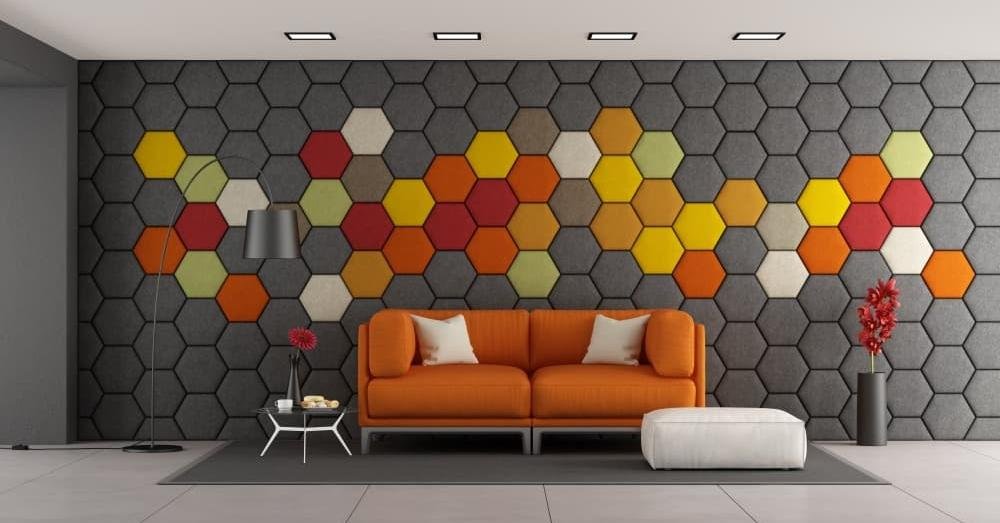Amongst all the acoustic elements, acoustic wall panels are the most notable ones in transforming the acoustic setting of a given space, such as an energetic office, a quiet recording studio, or a personal home theater. The purpose of these panels is not only to provide a visual attraction but also to inhibit the manifestations of unnecessary noise and reverberations, thus improving sound quality, comfort, and clarity. These acoustic wall panels are offered in different styles, with specific design elements, assortments of materials selection, and sound absorption performance modified enough to suit the acoustics needs of various applications and user preferences.
Here are some common types of acoustic wall panels;
Fabric-Wrapped Panels: They are among the most popular solutions for their versatility and aesthetic quality. Fabric-wrapped panels comprise the core absorbent pointed out in either fiberglass or foam, which is wrapped in a fabric covering. The material used for the cover, which consists of a thick core, a thin layer, and a fabric fitting, acts as a customizable design element that allows sound waves to pass through and be absorbed by the core. The panels of this range are mainly used in theaters, recording studios, and offices. They have not only functionality but also beauty.
Perforated Wood Panels: Noise panels made of wood combine acoustic function and a natural, warm look. They are made of either thin wood veneer or solid wood, with holes through, milled very accurately. This way, sound waves can enter the panel through holes. The material inside the panel absorbs the sounds. The perforation design can be adjusted to provide the desired acoustic behavior through the adjustment of the frequency, depth, and space. The perforated wood panels are very common in places that reflect an image of luxury, such as business meeting halls, concert halls, and posh offices.
Foam Panels: Using foam panels is a very cost-effective, efficient option because of their lightweight and easy installation process, especially for budget types of work or temporary acoustic treatment projects. For this purpose, such panels are usually made out of closed-cell foam that traps and makes the waves sound as they pass through the material. Foam panels are good at absorbing high-frequency sound, but efficiently absorbing low-frequency ones is not that certain. Foam paneling is used routinely in domestic music studios, audio recording areas, and makeshift event spaces.
Bass Traps: Specialized bass traps are acoustic panels that are designed to absorb low-frequency sound waves, which is uniquely problematic to control with usual acoustic solutions. Bass traps are typically placed in corners or alongside walls, where sound in the lowest frequency range naturally builds up. They are generally thicker and denser than other acoustic materials to absorb the lower frequencies suitably. Bass traps are vital in environments where the exact bass response is vital, for example, recording studios, theaters, and living rooms.
Key Takeaway
Also Read : Revolutionizing Transactions: The Technology Behind Digital Payments in Stores
Also Read : Small Business, Big Impact: IoT in Everyday Operations
Every type of acoustic panel is characterized uniquely. It has its advantages, while the implications of the panel choice should be affected by factors including the acoustic requirements of the space, apostropic preferences, budgetary considerations, and installation requirements. Audio panels of the right type should be placed strategically to ensure that the space satisfies the perfect sound quality, as well as creating a pleasant and comfortable ambiance for the users.

